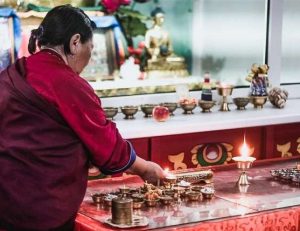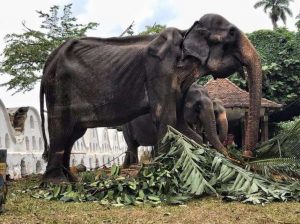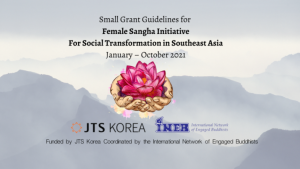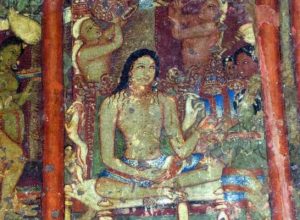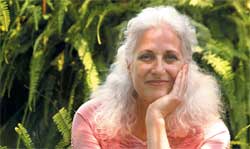
Jacqueline Kramer, author of Buddha Mom-the Path of Mindful Mothering and 10 Spiritual Practices for Busy parents, has been studying and practicing Buddhism for over 30 years in the Sri Lankan Theravadin tradition and Zen for 8 years. When she became pregnant with her daughter she applied Buddhist principles to her pregnancy, birthing and mothering to good effect. This led to her books and teachings. In 2008 Jacqueline received the Outstanding Women in Buddhism Award at the U.N. day for women in Thailand for her work teaching Buddhism to mothers. She is the director of the Hearth Foundation – www.hearth-foundation.org, which offers online lay Buddhist practice classes designed for mothers, a monthly newsletter and other resources for today’s mothers seeking spiritual support and inspiration. Hearth has students in Australia, Argentina, New Zealand, Europe, the US, Canada and throughout the world. She is past vice president of Alliance for Bikkhunis, has been on their editorial board, and actively supports female monasticism. Jacqueline is currently studying koans with John Tarrant, writing on femininity and Buddhsim for Turning Wheel, and other magazines, and developing teachings informed by feminine spirituality. Jacqueline lives in Sonoma County, California.
—
The Vimalakirtinirdesha Sutra tells the tale of the great layman Vimalakirti who lives in a home that offers shelter to a seemingly endless parade of beings. One of the beings who has taken up residence in his home is a goddess. One day, the Buddha’s great disciple, Shariputra, comes to call on Vimalakirti and encounters the goddess. Not one to mince words, or perhaps shocked to see a female in the great Vimalakirti’s home, Shariputra asks the goddess, “Why don’t you change your female sex?”
The goddess answers, “I have been living here twelve years looking for the innate characteristics of the female sex and haven’t been able to find any, so how can I change what I can’t find? If someone asks, ‘Why don’t you change your female sex?’ what is he really asking?”
The goddess then uses her supernatural power to change Shariputra into a likeness of herself and change herself into a likeness of Shariputra, saying, “All things are without any determinate, innate characteristics, so how can you ask, ‘Why don’t you change your female sex?’ Why don’t YOU now change your female sex?”
Shariputra, in the form of a goddess, answers, “I do not know how I changed into a female form so how can I change back to a male form?”
The goddess responds, “Shariputra, just as you are not really a woman but appear to be female in form, all women also only appear to be female in form but are not really women. That is why the Buddha said that we are not really men or women.”
Then the goddess, using her supernatural power, changed Shariputra back into his own form.
In contrast to this teaching on non-duality given by Vimalakirti’s goddess, the home I grew up in harbored a clear distinction between feminine and masculine. I stayed in the kitchen and washed the dishes with my mom while my brothers went up on the roof to make repairs with my dad. I took ballet lessons but my brother was forbidden to dance, he took piano lessons and I, being female, learned violin. My brother was expected to do something great in the world, I was expected to marry someone who did something great in the world. When my father died the family inheritance went to the favored son. This sort of traditional perspective on male and female roles permeates cultures throughout the world. It is the insistence that women wear burkas in the middle-east, it is the baby daughters left to die in China, it is the young girls married off in India, it is the single mothers who can’t make enough money to feed their hungry children in America.
Like many other westerners I came to Buddhism out of some mysterious calling and to ease deep psychic pain. Buddhism was foreign and exotic. The faces of the Buddha statues looked so calm, in contrast to the faces I saw all around me, and there were beautiful words like jasmine and divine abode and satipanna. So I projected onto Buddhism everything I wanted to see in a religion. On retreat, and in the midst of daily practice, this vision sprung to life. A nameless world between thoughts where no duality existed appeared. Off the cushion, since a good portion of my psychic pain seemed to stem from being born a woman, I explored the female aspect of being a Buddhist. Much to my chagrin I discovered that in Buddhism being born a woman carried the same onus I was trying to escape.
At first I was shocked and outraged. I fought with my pen, demanding equality for female practitioners. After awhile, growing weary of the fight, I sank into, what felt like, a bottomless sorrow. Was Buddhism to become yet another home where the fullness of who I am was not welcome? Still, I continued to meditate and began koan inquiry. The closer I came to the vastness during meditation and inquiry the less important the distinction between “feminine” and “masculine” became. There, in the silence, was my true original nature, an unbounded nature that was neither feminine nor masculine. I was beginning to experience what I now believe the Buddha was really pointing to.
Still, there is something about feminine and masculine that needs to be observed, honored and worked with in this human realm. Ultimately there is no masculine and feminine, only the undivided, luminescent, unconditional love that is the texture of the vastness. But to get to the place of awakening to this reality we travel through a world filled with apparent dualities. Finding balance between perceived opposites seems to be one of the essential aspects of the path.
There is no duality in the ultimate vastness, in what Bankei called the Unborn Buddha Mind. Yet, to authentically inhabit our original non-dual nature we walk the road of kindness by respecting all apparent dualities as different but equal. Then, while on our travels if we stumble upon the home where Vimalakirti, the goddess and Shariputra reside, we can move into our true home with one foot on the Earth.





